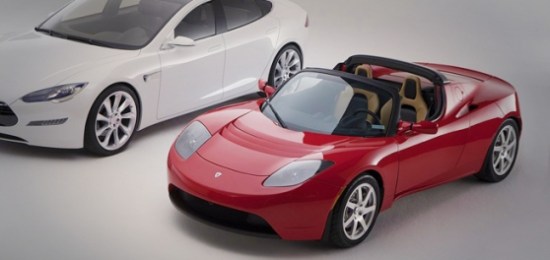Tesla Can’t Charge From 0% Battery, Can Be Permanently Bricked
So it seems that Tesla cars have an interesting problem that you might not think an electric car would have; they can’t charge from 0% battery. If you leave a Tesla parked for too long, its background systems — which are permanently running — can drain the battery all the way down, at which point the car is effectively useless unless you purchase a new battery from Tesla for about $40,000. Your Tesla can get “bricked.”
The issue seems to plague all models of Tesla Motor’s vehicles, but has recently gotten some attention due to a blog post by Michael DeGusta which highlights the matter. The big deal here is not only that the Tesla can brick, essentially destroying $40,000 by doing so, but also that the Tesla can brick just from being left alone. Fortunately, the always-on systems don’t draw too much power; on a fully charged battery, a Tesla can last about 11 weeks without a recharge, after which it will become completely useless. You can’t even push a bricked Tesla.
It sounds pretty far out, I know, but DeGusta says that he’s found five instances of bricked Tesla Roadsters and has been pointed to all of them by a Tesla service manager. Granted, they all seem to involve weird circumstances since it’s rare to not use your car for 11 weeks, but a Japanese man who had one imported, and then had some voltage problems, found himself with a big ol’ Tesla-shaped brick, and he isn’t the only one.
Perhaps the most troubling aspect of all this is the way that Tesla appears to have dealt with the issue so far. For one, if this happens to you, you’re going to have to shell out; your warranty will be voided for “failure to maintain the Battery at a proper charge level at all times.” On top of that, the owner’s manual seems to gloss over the possible effects of neglecting your charging duties, saying:
The Tesla battery is optimized for nightly charging… The Model S battery will not lose a significant amount of charge when parked for long periods of time. For example, Model S owners can park at the airport for extended vacations without plugging in.”
You’ll note that there doesn’t appear to be any mention of what happens if you don’t charge it nightly, or what exactly a “significant amount” is, or an “extended vacation” for that matter.
Granted, it’s unlikely that you’ll ever leave your car totally alone for the 11 weeks necessary to brick it, but there are scenarios in which that might happen and $40,000 is a high price to pay, a price that makes even the slightest chance seem like a huge gamble.
Tesla has come out and responded to these critisims. Here’s what they had to say:
All automobiles require some level of owner care. For example, combustion vehicles require regular oil changes or the engine will be destroyed. Electric vehicles should be plugged in and charging when not in use for maximum performance. All batteries are subject to damage if the charge is kept at zero for long periods of time. However, Tesla avoids this problem in virtually all instances with numerous counter-measures. Tesla batteries can remain unplugged for weeks (even months), without reaching zero state of charge. Owners of Roadster 2.0 and all subsequent Tesla products can request that their vehicle alert Tesla if SOC falls to a low level. All Tesla vehicles emit various visual and audible warnings if the battery pack falls below 5 percent SOC. Tesla provides extensive maintenance recommendations as part of the customer experience.
Take that as you will. In any event, it’s good to know.
(via Venture Beat, Engadget)
- This electric car is 115 years old
- And electric DeLorean is in the works
- This electric car is just one molecule
Have a tip we should know? [email protected]
